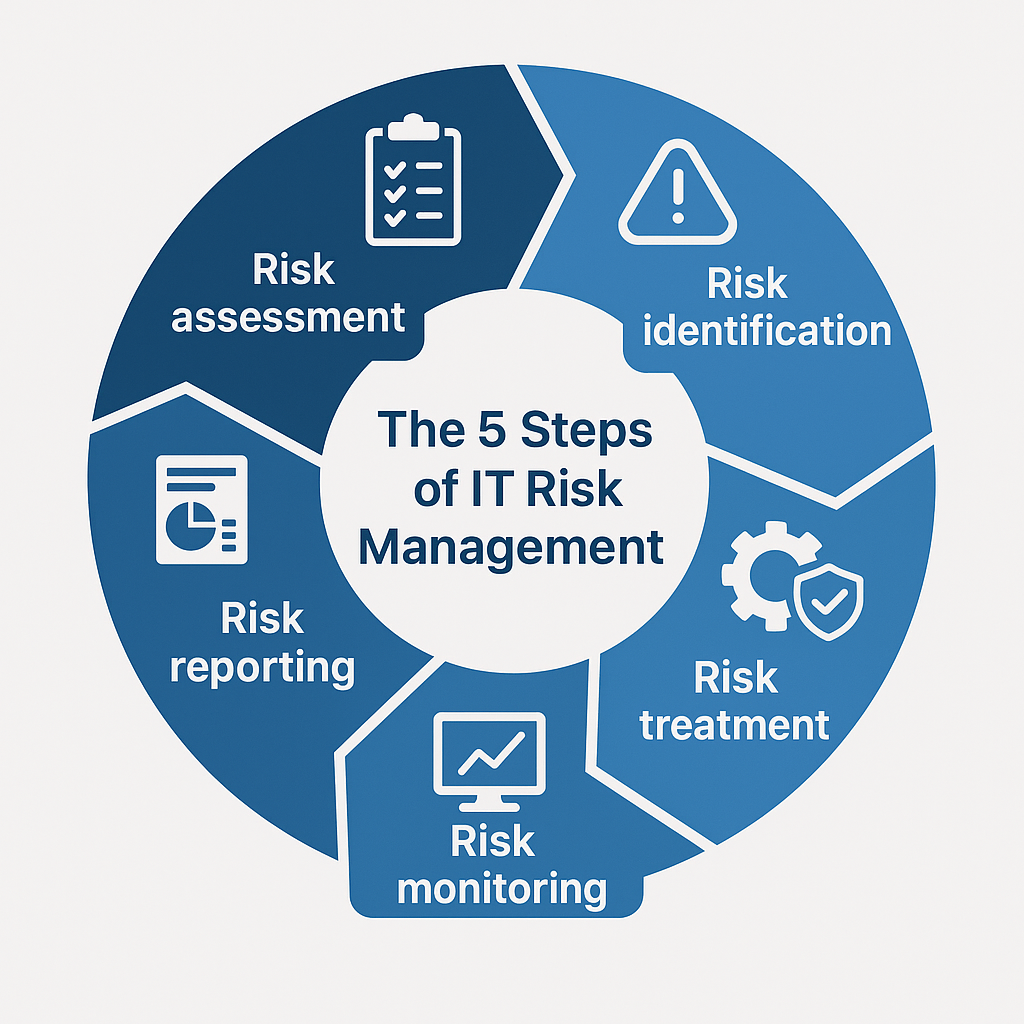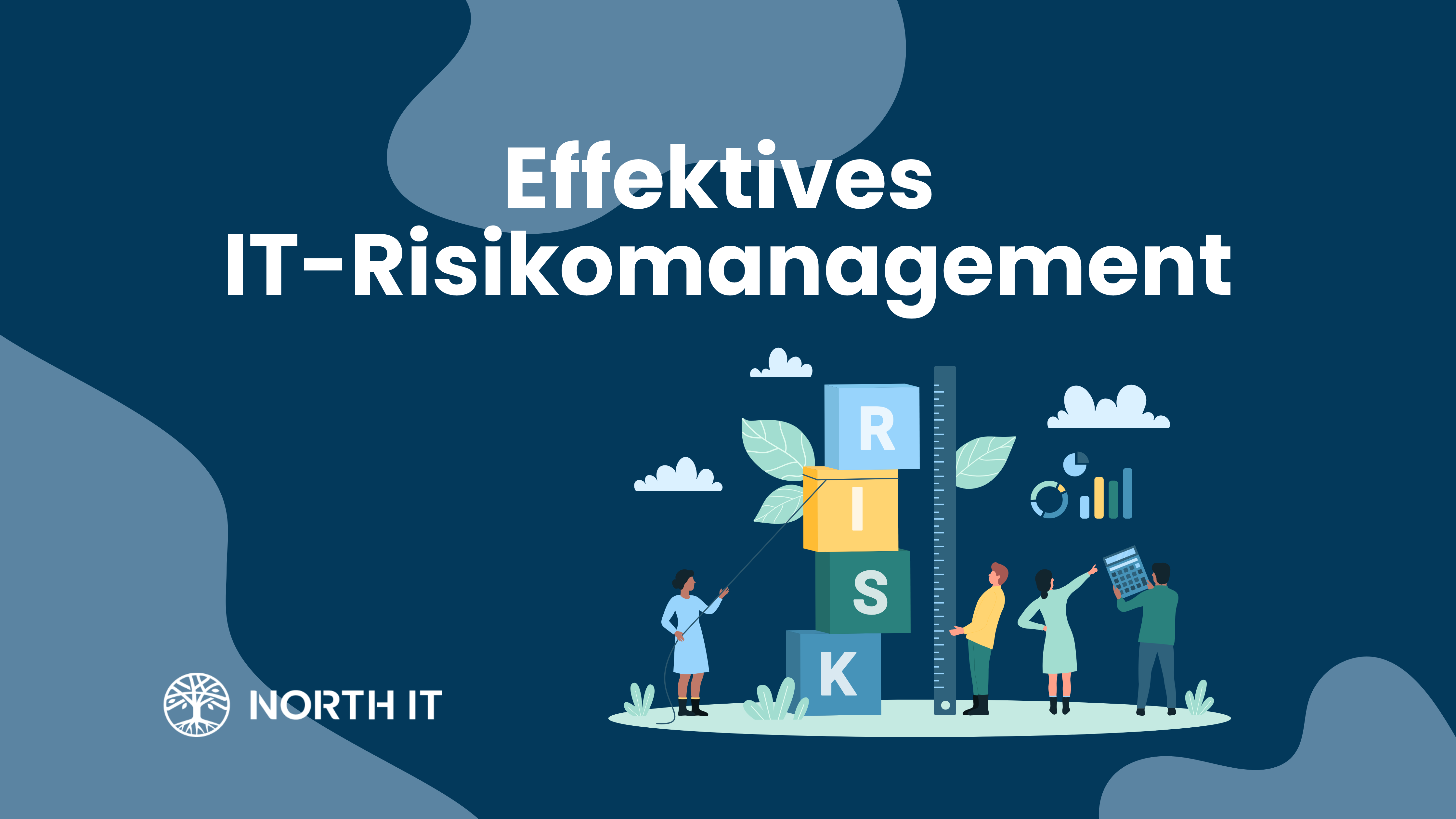IT risk management: essential protection for your company
In the face of increasing threats from cyber attacks and ever-changing regulatory requirements, IT risk management is a crucial factor in the security and stability of any successful business. It helps to minimize potential loss or damage from IT system failures, data breaches and other risks. In this article, we shed light on the importance of IT risk management, highlight real-life examples and explain how company managers can effectively protect their IT infrastructure.
What you need to know
- IT risk management is crucial to prevent financial losses, data breaches and reputational damage.
- The core steps include risk analysis, assessment, treatment and control.
- Effective management of IT risks contributes significantly to business continuity.
- IT Risk Managers earn on average between €53,100 and over €90,000 per year, depending on qualifications and experience.
- Implementing risk management for projects and creating secure websites is very important.
Why is IT risk management so important?
The digital landscape is evolving rapidly, and with it, the risks for companies are also growing. From cyber-attacks that compromise sensitive data to system failures that can cripple operations, the threats are varied and potentially devastating. Proactive IT risk management enables companies to identify and assess these risks and take appropriate measures to avert or minimize damage.
Examples of risk management in practice
Effective risk management can take various forms. For example, the implementation of firewalls and regular security updates can serve as a preventative measure against cyber attacks. Another example is the introduction of contingency plans and back-up systems to reduce the impact of system failures. Through such measures, companies can significantly reduce the likelihood and extent of potential damage.
What are the process steps of successful IT risk management?
Successful IT risk management follows a structured process that is broken down into several key steps. It all starts with risk identification, where potential threats and vulnerabilities within the IT infrastructure are identified. This is followed by risk assessment, in which the probability of occurrence and the potential impact of the identified risks are analyzed. Based on this assessment, suitable measures are defined in the next step, risk treatment, in order to reduce, transfer, avoid or consciously accept the risks. This can take the form of technical safety precautions, insurance or other strategies. Finally, risk monitoring and reporting is a continuous process that ensures that risk management remains current and adapts to new threats. This cycle enables companies to effectively manage their IT risks and ensure security and business continuity in the long term.

Risk management for projects and website creation
Risk management is also crucial when planning and implementing projects and creating websites. By identifying potential problems early on and implementing risk management strategies, project managers can ensure adherence to schedules and budgets and guarantee the quality of results. If you're having a website built, make sure your service provider employs best security practices to protect your online presence from attack.
How to find the right IT risk manager
Finding a qualified IT Risk Manager is critical to building an effective risk management system. In addition to technical qualifications, candidates should have experience in your specific business environment and be able to understand and manage complex risk scenarios. Job advertisements should clearly define specific requirements and expected competencies to attract the best talent for your needs.
Conclusion
Robust IT risk management is essential to protect your business from the diverse threats of the digital world. By identifying, assessing and addressing risks, you can not only prevent financial losses and data breaches, but also keep your business running smoothly. Invest in qualified IT risk managers and use best practices in risk management for projects and secure website creation to future-proof your business.
Photo source: pexels.com



